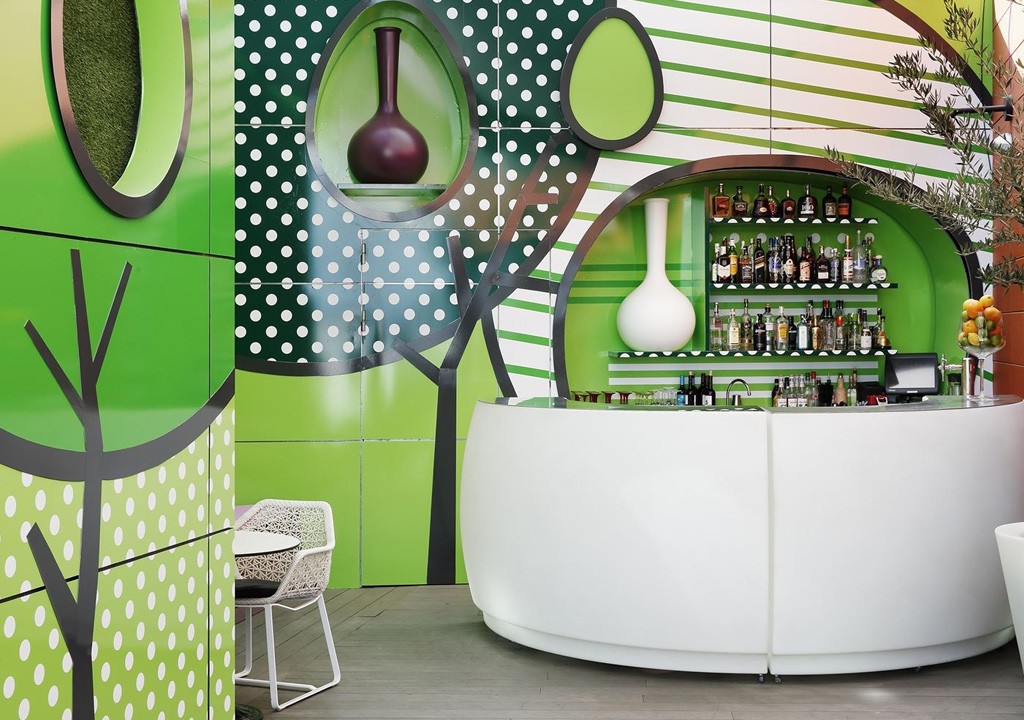In recent years, there has been a growing trend towards incorporating elements of nature into interior design. As people become more aware of the importance of sustainability and environmental conservation, they are seeking ways to bring the outdoors inside. Green interior design, which focuses on incorporating natural elements and sustainable practices into living spaces, has become increasingly popular for its aesthetic appeal and positive impact on well-being.
One of the key principles of green interior design is the use of natural materials. From reclaimed wood and bamboo to stone and clay, incorporating natural materials into furniture, flooring, and decor adds warmth and texture to a space while reducing the environmental impact of production. These materials not only lend a sense of authenticity to a room but also help to improve indoor air quality by minimizing the use of synthetic chemicals.
Plants are another essential component of green interior design. Not only do they add a splash of color and life to a room, but they also have numerous health benefits. Indoor plants help to purify the air by absorbing pollutants and releasing oxygen, creating a healthier indoor environment. Additionally, caring for plants can be a therapeutic activity that reduces stress and improves mental well-being.
Incorporating natural light into interior spaces is another hallmark of green design. Maximizing natural light not only reduces the need for artificial lighting but also helps to create a connection to the outdoors. Large windows, skylights, and strategically placed mirrors can help to amplify natural light and create a sense of spaciousness and tranquility.
When it comes to color palettes, green interior design draws inspiration from the natural world. Earthy tones such as shades of green, brown, and beige are often used to create a sense of harmony and balance. These colors evoke feelings of serenity and connection to nature, making them ideal for creating inviting and relaxing spaces.
In addition to incorporating natural materials and colors, green interior design also emphasizes sustainable practices such as energy efficiency and waste reduction. Choosing energy-efficient appliances, using eco-friendly paints and finishes, and repurposing or upcycling existing furniture are just a few ways to minimize environmental impact while creating a beautiful and functional living space.
In conclusion, green interior design offers a fresh and inspiring approach to decorating that celebrates the beauty of nature while promoting sustainability and well-being. By incorporating natural materials, plants, natural light, and sustainable practices, homeowners can create spaces that are not only visually stunning but also environmentally friendly and conducive to health and happiness.



 Skin Care
Skin Care Face
Face Personal Care
Personal Care Bath & Body
Bath & Body Exfoliating Body Gloves
Exfoliating Body Gloves Hair Remover
Hair Remover Beauty Tools
Beauty Tools Foot Relief Accessories & Tools
Foot Relief Accessories & Tools Fragrances
Fragrances Hair Care
Hair Care Makeup
Makeup Brushes & Sets
Brushes & Sets Eyes
Eyes Lips
Lips Makeup Accessories
Makeup Accessories Nails
Nails Medical Supplies
Medical Supplies Men’s Care
Men’s Care Pain Relief
Pain Relief Lighting
Lighting
 Men’s Inner Wear
Men’s Inner Wear Vests
Vests Men’s Kurtas & Shalwar Kameez
Men’s Kurtas & Shalwar Kameez Men’s Winter Clothing
Men’s Winter Clothing Hoodie
Hoodie Mens Accessories
Mens Accessories Straightening Combs & Brushes
Straightening Combs & Brushes Women’s Clothes
Women’s Clothes Kurtas & Shalwar Kameez
Kurtas & Shalwar Kameez













